As we move into the second half of the year, supply chains remain in a state of adjustment. Peak season volumes continue to drive demand, but we’re also seeing growing interest in flexible routing, inventory positioning, and digital integration as businesses respond to changing trade policies and regional capacity shifts.
In this month’s update, you’ll find the latest insights from our teams across lead logistics, ocean, LCL, customs, inland, warehousing, ground freight, and e-commerce. Each section offers updates and actions you can take to keep your operations resilient and your planning aligned with current market conditions.
To receive the Maersk North America Market Update in your inbox, sign up for our logistics newsletter here and update your preferences when prompted via email.
Lead Logistics Update

Visibility and planning remain top priorities for many importers navigating ongoing tariff-related uncertainty. While initial volatility earlier this year led some to anticipate a rebound in volumes, that hasn’t materialized across the board. Instead, we’re seeing a steady focus on cost control, simplified operations, and the use of technology, especially predictive tools, to improve supply chain performance.
Businesses are placing more value on real-time, reliable data to make faster decisions. Many are moving away from manual tracking across multiple providers and standalone tools in favor of more integrated visibility platforms. Whether through managed services or in-house systems, the goal is the same: to reduce blind spots, flag disruptions early, and tighten control over lead times and cost.
We’re supporting this shift by helping customers improve visibility through tools that track cargo performance. This includes predictive ETAs and disruption alerts that help teams understand what’s happening before delays impact downstream operations. We’re also seeing customers reassess how many systems and handoffs they rely on—fewer touchpoints are helping teams move faster and stay ahead of operational risk.
Looking ahead, planning windows remain tight, and sourcing patterns continue to shift. We’re expanding visibility capabilities to include additional risk indicators, such as weather and labor disruptions, and continuing to work closely with customers to adjust plans as market conditions evolve.
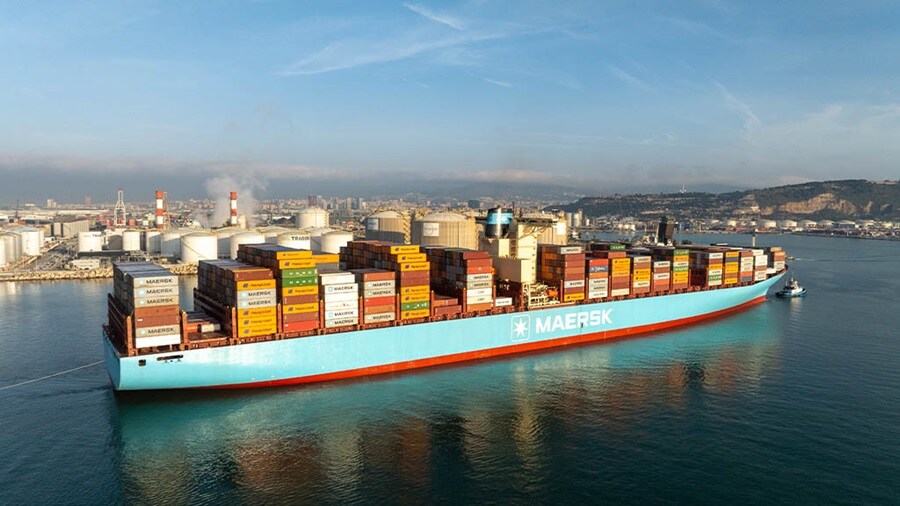
Ocean Update
Europe to North America: The recent U.S. tariff announcements have introduced some uncertainty for customers. While maintaining current routing strategies has the merit of familiarity, it may be time to review fall shipment plans to ensure that you are prepared for potential future policy changes or impacts. If you're considering making changes to your sourcing or routing, now is a good time to assess available capacity and secure space.
Indian Subcontinent, Middle East, and Africa to North America: The Red Sea environment remains challenging. If you're shipping on MECL or TP16 services, we strongly recommend booking as early as possible. Peak season volumes are expected to arrive shortly, and available space will decline quickly. If you're flexible, consider rerouting through the U.S. West Coast. That option may offer temporary relief, but even West Coast vessels are likely to face constraints during early fall.
For those sourcing from Africa, be aware that West Africa cut flower volumes continue into Q3, alongside steady cocoa shipments. In South Africa, the citrus season is in full swing, and if you’re moving perishable cargo from these regions, locking in space early is critical. If you rely on time-sensitive apparel flows, build extra time into your planning to avoid missed sailings.
Asia-Pacific to North America: The Transpacific market remains fluid. The Shanghai Containerized Freight Index (SCFI) shows declines in shipments into both the U.S. East and West Coasts, possibly due to broader economic factors such as reduced consumer spending and cautious inventory strategies.
Space into the Pacific Northwest, specifically Prince Rupert, Vancouver, and Tacoma, remains tight. If you’re routing cargo through these ports, we strongly recommend booking as early as possible to secure space.
Our East-West network (Gemini) continues to operate with high reliability. Transpacific Eastbound services are currently operating at 98.5% on-time reliability into the U.S. West Coast and 90.4% into the East Coast, both above industry averages.
To receive the latest updates on your cargo, sign up for ETA notifications or check schedules on Maersk.com. For operational updates in our “Weekly Reader,” subscribe to our advisories at Maersk.com/newsletter.
Less than Container Load (LCL) Update
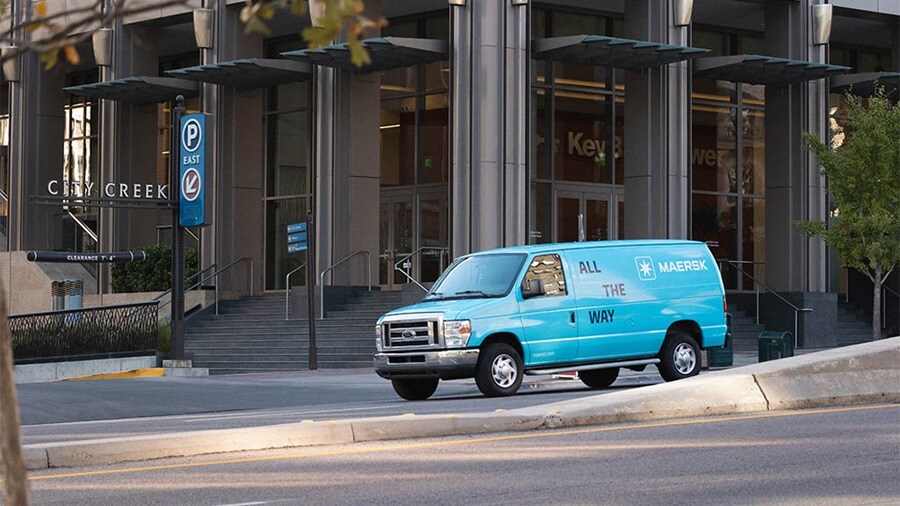
Conditions in the LCL market remain challenging. In some trades, labor disputes and geopolitical instability are adding pressure, leading to inconsistent transit times and unexpected delays.
We’re seeing more importers incur additional costs due to fragmented shipments, last-minute rerouting, or shifts to more expensive modes. Uncertainty around space and scheduling is making it harder to stay aligned with original logistics budgets. Visibility gaps are also a recurring issue, particularly between consolidation and final delivery, which complicates inventory planning.
If you're relying on LCL to manage smaller shipments or support frequent replenishment, it's essential to stay close to your provider on scheduling, service performance, and handoff points. Partners with more control over their network and fewer dependencies across subcontractors tend to offer better predictability and fewer blind spots. This can help you stay on schedule and within budget, even as conditions shift.
Geopolitical disruption will likely continue to have some impact, though new trade agreements may start to ease pressure. If you haven’t reviewed your LCL routing, service mix, or visibility approach recently, now is a good time to assess whether your current setup is still meeting your needs.
Customs Update

Customs regulations are shifting fast, and many importers are feeling it across their supply chains. Since January, U.S. Customs and Border Protection (CBP) has introduced several changes. One of the most significant is the suspension of the de minimis exemption for all countries, effective August 29, 2025. Previously, shipments valued under $800 could enter duty-free under Section 321. Now, all shipments, regardless of value or origin, will require formal entry and be subject to applicable duties and tariffs. Postal shipments will still be allowed under simplified procedures for a limited time, but will incur new fixed or ad valorem duties based on the country of origin.
Tariffs under Sections 301, 232, and 201, and IEEPA, as well as Chapter 99 codes, have been updated repeatedly in recent months. New measures include a 50% tariff on select Brazilian-origin goods, a 50% tariff on semi-finished copper imports, and additional ad valorem duties declared in April. Some of these changes were announced with limited notice, and they’re affecting a wide range of commodities.
For importers, this means more risk. A shipment that cleared last quarter might now need extra documentation, carry higher duties, or face inspection. Missteps in classification or paperwork can delay deliveries, add costs, and trigger compliance reviews.
These changes also add pressure to day-to-day operations. Sudden increases in duties or shipment holds can strain cash flow and disrupt delivery schedules. Mistakes in customs entries, especially misclassifications, can lead to penalties or audits. If your team doesn’t have in-house trade compliance resources, staying ahead of these shifts can be even harder.
To manage this environment, many importers are turning to digital tools that improve visibility and reduce manual work. Real-time monitoring of regulatory changes, automated data feeds, and exception alerts can help your team respond quickly as rules evolve. Connecting your customs and supply chain systems also reduces the risk of errors and gives you a clearer view of your duty exposure before goods arrive.
Now’s a good time to revisit your HS classifications and origin documentation. Eligibility under trade programs like USMCA, CAFTA, or the new Japan and Indonesia agreements may require updated data. CBP enforcement is also intensifying around forced labor compliance, transshipment risks, and origin claims. Pre-screening shipments before they leave the supplier can help avoid issues downstream.
Visibility is a key part of managing customs risk. Real-time access to duty exposure, clearance status, and exception alerts can help you catch issues early. Integrating your ERP with customs workflows, via API, EDI, or file uploads, reduces manual work and improves accuracy.
Solutions like our Trade & Tariff Studio can pre-screen product classifications and flag HTS code mismatches before goods move. If your classifications are complex or frequently changing, securing binding rulings can remove uncertainty and offer protection during audits.
Strategic planning also matters. Reviewing country of origin, exploring tariff engineering options, and using available trade agreements can create more predictability in your landed costs, especially if your team doesn’t have dedicated trade compliance expertise.
We expect this complexity to continue into 2026. CBP is under growing pressure to enforce rules around forced labor, transshipment, and de minimis use. These aren’t temporary shifts. They reflect a broader change in how trade is being regulated and monitored.
If you’re rethinking your customs approach or want to talk through your options, our Trade Services team is here to help. You can reach us at CHB.NORTHAMERICA@MAERSK.COM.
Inland Update
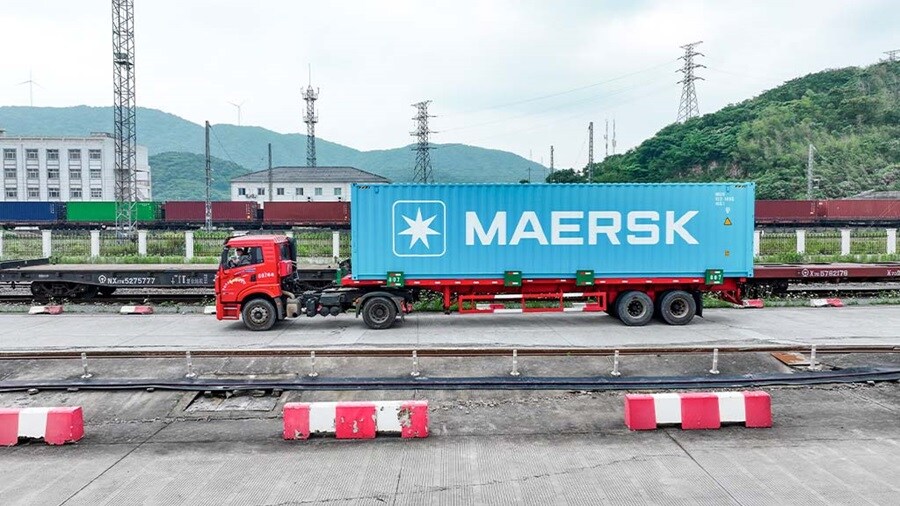
We’ll start with the U.S, where our core inland operations are performing in line with our expectations, with container dwell times below historical averages, fast truck turn times, minimal rail delays, and solid chassis availability across key port markets.
That said, drivers and equipment are being pulled toward high-priority, tariff-sensitive cargo, which may create delays for lower-priority moves. Volume unpredictability and recent carrier bankruptcies have added pressure to the drayage market. If you have time-sensitive cargo, consider booking earlier or reviewing alternative routing and timing options with your logistics partners. Sharing special cargo requirements in advance, such as reefer, overweight, or urgent freight, can help secure the right inland capacity before bottlenecks develop.
In this environment, consider consolidating drayage across multiple port markets through a single provider. This can reduce coordination challenges, streamline communication, and improve service consistency. We offer in-house trucking services across all major U.S. markets, which allows customers to work with a single, integrated carrier regardless of port location. This setup can provide more flexibility, better visibility, and consistent service across regions.
As a reminder, PierPass charges at the Ports of Los Angeles and Long Beach increased by 2.8% on August 1st. The updated fees are now set at $38.78 per TEU and $77.56 per FFE. These fees apply to all containers moving through these ports.
Turning to Canada, the Maersk Biscayne extra loader arrived in Prince Rupert on August 1 and phased into Seattle on August 7 as part of the WC Extra Loader service. To manage the potential impact of this additional volume on inland networks, we’re closely monitoring downstream flows and coordinating with CN and CP to balance capacity.
In Western Canada, wildfire risk remains elevated, and CN rail service could see interruptions in high-risk areas. To address this, we are actively working with rail partners to identify alternative routing options and are prepared to reroute traffic as needed to maintain service continuity.
In Eastern Canada, Montreal continues to experience congestion due to extended terminal dwell times and major infrastructure work near Turcot, Ville-Marie, and the La Fontaine Tunnel. These factors are affecting appointment reliability in and around the city. In response, we’re partnering with local carriers to adjust delivery schedules and routing around known construction timelines to reduce delays.
At the Port of Newark, high dwell times are beginning to impact rail cargo flows into Canada. To mitigate this, we are supporting terminal coordination efforts to gradually reduce dwell times, ensuring more reliable connections into Canadian inland destinations.
As you plan shipments, consider building in extra lead time for inland rail and trucking services, especially from the West Coast. Flexibility around Montreal delivery appointments is advised due to current traffic and infrastructure constraints. Reefer trucking challenges are expected to persist in the near term due to seasonal demand and limited carrier availability, so proactive planning remains essential.
If you need support adjusting shipment plans or securing inland capacity, our team is available to help.
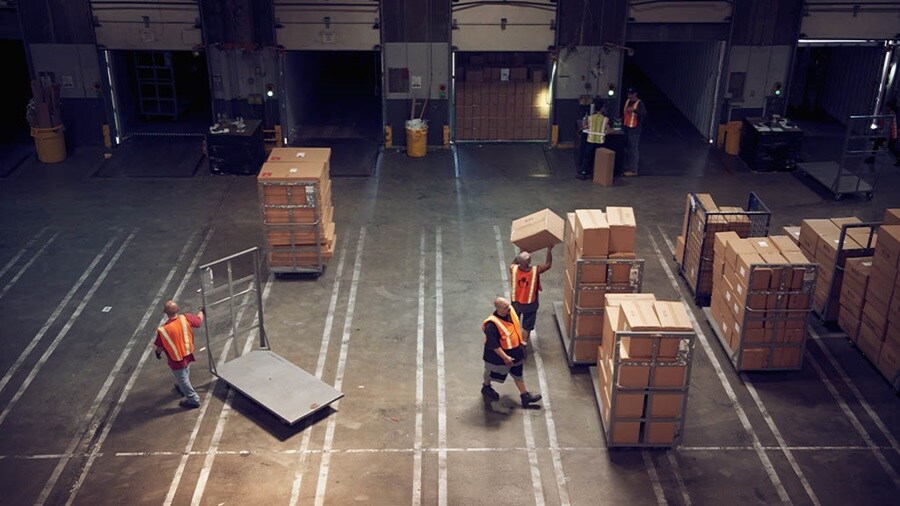
Warehousing Update
Many importers are accelerating shipments ahead of tariff changes. Still, some companies are shifting away from just-in-time models to just-in-case models, which keep storage needs elevated even after goods arrive.
Businesses are focusing on lowering the cost per unit inside the warehouse while exploring bonded and FTZ space to manage duties. Interest is also growing in nearshore alternatives to serve local markets more efficiently, reduce cross-border complexity, and the impact of higher tariffs for Canada.
As you plan for your peak Q4 season, now is the time to prepare and secure your warehouse space needs. Locking in space now, especially for high-velocity SKUs or late-arriving inventory, can help avoid future space constraints. Overflow and flexible storage options can provide breathing room if volumes spike unexpectedly. For shipments facing duty exposure or uncertain tariff treatment, bonded or FTZ facilities may offer a way to defer costs and reduce financial risk.
Consider whether you should outsource warehousing operations to redirect internal focus toward sales and product strategy. Multi-user and scalable space solutions can offer the flexibility to grow without long-term commitments. Warehousing solutions that are integrated with broader logistics flows can also improve speed, reduce dwell time, and give better control over cost per unit. Dray direct-to-transload services, automation, and value-added capabilities like pick/pack, labeling, and cross-docking can help improve throughput and reduce handling costs.
We recommend actively evaluating how to adapt warehousing strategies in response to shifting trade and inventory conditions, and exploring ways to make distribution networks more flexible and cost-effective. Our in-house Supply Chain Design and Innovation teams can support these efforts by helping identify key planning considerations, based on market trends and operational data, to inform decision-making.
Looking ahead, tariff policy uncertainty, global cost pressure, and cautious consumer demand are all shaping how businesses position inventory. Now is the time to look into shorter-term space agreements, more diversified networks, and cost-efficient final mile options.
If your warehousing plans are still in progress, now is a good time to revisit your network, space needs, and cost structure to ensure readiness for the months ahead.
Ground Freight Update
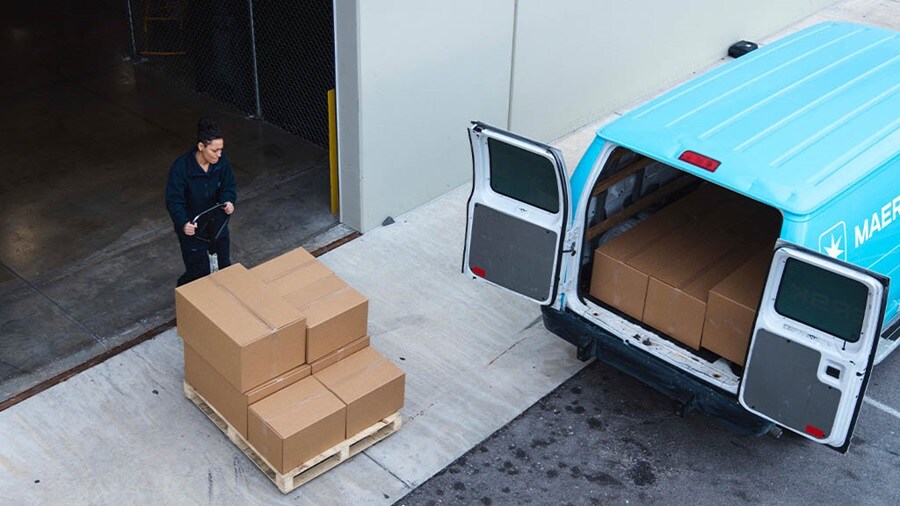
Ground freight demand in the U.S. continues to reflect broader economic pressures. Many businesses are reporting slower sales and responding with short-term promotions or tighter inventory control. E-commerce volumes have also declined, with fewer shipments moving through the network compared to earlier this year.
Our view is that much of this trend is tied to the U.S.’ recent 90-day “pause” in tariff enforcement that expired for several trading partners on August 1. Many customers used that window to delay new inventory moves or reevaluate sourcing plans, leading to a temporary drop in shipment volume and a more cautious approach to transportation spending.
In response, we’re working with customers to build more flexible, use-what-you-need service models. This allows you to offer a range of delivery options to warehouses, homes, and businesses while removing services that may not be essential right now. For many, this approach is helping reduce costs and improve delivery performance without adding complexity.
If you're reviewing your ground freight setup, consider whether your current transportation mix still aligns with what your end consumers expect, and what your logistics network can realistically support. Offering more delivery flexibility and visibility can enhance the customer experience while maintaining operational efficiency.
The next two to three months will be important to watch. Recent tariff updates are likely to influence how and when shippers and supply chain decision-makers restart or reschedule shipments, especially as they plan for the remainder of the year. Consumer demand trends, cost pressures, and ongoing policy shifts will continue to shape how ground freight strategies evolve.
In Canada, if you’re managing domestic moves, be aware that equipment availability, especially for flatbed and reefer, is uneven in some regions. Western Canada is seeing tighter conditions due to seasonal agricultural shipments and industrial demand.
Transit time performance has improved on major corridors, and many shippers are prioritizing flexibility, booking short-term and reliable moves while keeping longer-term commitments on hold for now.
If you’re moving freight into or out of Western Canada, now is a good time to review projected volumes and secure capacity early, especially if you rely on flatbed or temperature-controlled equipment. Planning ahead will help avoid disruptions during the peak agri season. If you have flexibility in timing or routing, consider discussing alternative options with your provider to stay ahead of potential bottlenecks.
We’re continuing to expand our carrier network to support consistent coverage and stay responsive as market conditions shift. If you’re seeing changes in your network or need help adjusting routes or equipment planning, our team is here to support your next steps. Maersk LTL and FTL have now joined MyCarrier, which enables shippers to get their pricing, manage their order-to-invoice processes, and provides full control over their freight spend. https://go.mycarrier.io/
E-Commerce Update

Fast, seamless integration is becoming a key enabler for e-commerce businesses looking to scale quickly. For sellers, the ability to connect shipping workflows to their sales platforms without custom development is now essential, especially in SMB and mid-market segments where speed and simplicity are critical.
To support this, Maersk E-Commerce Parcel delivery is now integrated with ShipTheory. This e-commerce shipping platform connects directly with major marketplaces and sales systems like Shopify, Magento, WooCommerce, Linnworks, NetSuite, and Brightpearl. This integration allows e-commerce sellers to select Maersk as a carrier within their existing ShipTheory workflow.
Once enabled, shipping labels, tracking numbers, and customs forms are automatically generated based on the seller’s existing business rules. This eliminates the friction typically associated with onboarding a new carrier and drastically reduces setup time. For high-volume shippers, this streamlines fulfillment while maintaining control over how each order is handled.
This is particularly beneficial for sellers who want to simplify carrier selection, reduce manual tasks, and enhance tracking visibility without disrupting their existing operations. Integrations like these are especially valuable in competitive markets, where speed, automation, and reliability are crucial to customer retention and operational efficiency.
Looking ahead, we’ll continue expanding our partnerships with integration platforms. These tools go beyond label generation; they automate real-time tracking updates, apply smart shipping rules, and sync inventory across channels. For e-commerce sellers, this means fewer errors, faster shipping, and better customer experience.
If you're evaluating ways to simplify fulfillment or expand your delivery options, now is a good time to explore whether your current platform supports direct integration with Maersk e-commerce. These solutions are designed to scale with your business, without adding complexity to your operations.
More News & Insights from Maersk from around the world
- Resilience in the storm: adapting to severe weather in supply chains
- Building resilient supply chains in a world of constant disruptions
- Building resilient supply chains: how strategic warehousing networks and partnerships drive agility in 2025
Visit our Insights Hub where we share the latest trends in supply chain digitization, sustainability, growth, resilience, and integrated logistics.
Useful links
To sign up for the Maersk North America Market Update newsletter, click here and update your preferences when prompted via email.
Check Maersk market updates from across other regions by clicking here.
Anything you need, we’re here to help
I agree to receive logistics related news and marketing updates by email, phone, messaging services (e.g. WhatsApp) and other digital platforms, including but not limited to social media (e.g., LinkedIn) from A. P. Moller-Maersk and its affiliated companies (see latest company overview). I understand that I can opt out of such Maersk communications at any time by clicking the unsubscribe link. To see how we use your personal data, please read our Privacy Notification.
By completing this form, you confirm that you agree to the use of your personal data by Maersk as described in our Privacy Notification.

